Multifocal contact lenses are for people who have developed difficult seeing up close with their regular glasses and contact lenses, and now require reading glasses, or bifocals in order restore clear reading vision. These people have developed the eye condition known as presbyopia, and everybody at some point will be affected by this.
Presbyopia can be frustrating and it causes a lot of people to drop out of contact lenses. Multifocal contact lenses exist to help people in their presbyopic years continue to enjoy the convenience of contact lenses while still being able to see clearly in the distance and up close.
I am not a doctor. The information provided on this page is for general educational purposes only. You are not receiving medical advice or being prescribed contact lenses on this page. Please read Contacts Advice Terms of Use before continuing.
What Are Multifocal Contact Lenses?
Typically, after the age of 40, people will begin to experience a drop in their ability to focus on objects up close. This happens as the result of a gradual weakening of a muscle inside the eyes, called the ciliary muscle, which is responsible for adjusting the eye’s focus for near viewing.
When the near vision drops to the point where everyday tasks such as are reading a menu, 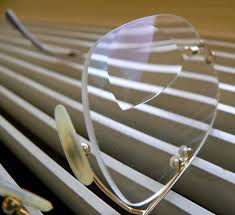 viewing a cellphone, or seeing fine print become problematic, you are experiencing the symptoms of presbyopia. The term presbyopia stems from the two Greek words presbus and ops which translate to old man and eye.
viewing a cellphone, or seeing fine print become problematic, you are experiencing the symptoms of presbyopia. The term presbyopia stems from the two Greek words presbus and ops which translate to old man and eye.
When you become presbyopic, it is common for you to require bifocal or progressive lenses for your glasses. These lenses provide different focusing powers in different zones of the lenses to allow you to see clearly both in the distance and up close. Multifocal contact lenses work in much the same way. They are the contact lens equivalent of progressive glasses lenses.
How Do Multifocal Contact Lenses Work?
Unlike progressive lenses for glasses, where you look through the top of the lenses to view the 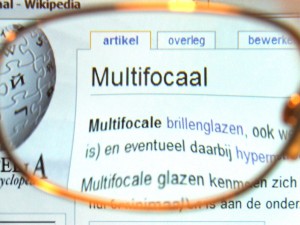 distance, and through the bottom of the lenses to see up close, contact lenses must be designed differently because they follow the eyes’ movements. You cannot selectively look through the top of the contact lenses for certain situations, and through the bottom for others.
distance, and through the bottom of the lenses to see up close, contact lenses must be designed differently because they follow the eyes’ movements. You cannot selectively look through the top of the contact lenses for certain situations, and through the bottom for others.
Therefore, instead of dispersing the power from the top to the bottom, multifocal contact lenses disperse the power from the center of the pupil, to the outside. Typically, multifocal contact lenses will require you to wear a near-dominant contact lens on one eye, and a distance-dominant contact lens on the other eyes. This allows the wearer to be able to see clearly at all distances, but it does present some downsides.
What Are The Advantages And Disadvantages of Multifocal Contact Lenses?
Advantages of multifocal contact lenses:
- Provides glasses-free clear vision in the distance and up close
- Vision is not restricted to small areas of the lenses in your glasses
- Gives the wearer a more natural and youthful appearance
Disadvantages of multifocal contact lenses:
- Vision is not as clear as with glasses
- May be difficult to adapt to
- Performance of lenses is dependent on adequate lighting
- May cause dryness and other contact lens induced irritation
The main reason people cite when they are not successful multifocal contact lenses is that the vision is not clear enough.
How To Tell If You Need Multifocal Contact Lenses
The first sign that you may need multifocal contact lenses is if your prescription for glasses has numbers in the ADD column. Numbers in this column indicate that you are presbyopic to some extent. Although there is no set limit to what the ADD number can be, it usually ranges between +0.75 to +2.50. The higher your ADD number is, the more you stand to benefit from multifocal contact lenses.
But more importantly than the ADD number, is how bothered you are by your vision up close. If you’re approaching, or above the age of 40, and you’re struggling with standard size print on paper and on your digital devices, then multifocal contact lenses could be for you.
The Most Important Thing To Remember Before Trying Multifocal Contact Lenses
It is crucial to understand that multifocal contact lenses are not intended or designed to give perfect, crystal clear vision at all distances. Even with all the correct parameters, the vision with multifocal contact lenses will not be as clear as with your glasses.
Multifocal contact lenses are intended to provide presbyopes with an alternative to progressive/bifocal glasses, while still achieving good (but not perfect) vision. A multifocal contact lens that is properly fitted should be able to achieve about 85-90% of your best possible attainable vision with glasses.
If you are the type of person who is bothered by anything less than perfectly crisp vision, or you require absolutely perfect vision for your work or hobbies, multifocal contact lenses are simply not for you.
Multifocal contact lenses are for the easy going presbyopes who can accept a small compromise in vision in order to attain freedom from glasses.
Different Types Of Multifocal Contact Lenses
No two multifocal brands are made the same. There have been many different designs over the years, each with their own pros and cons.
Dominant Eye Designs
Many brands require the wearer to determine his/her dominant eye before the fitting. The dominant eye is typically fitted with the lens that will be devoted to making the distance vision clear. The non-dominant eye is then fitted with the lens that will make the near vision clear. In this type of design, though both lenses will have both the distance and the near prescription in them, on the dominant eye, the lens will have the distance prescription in the centre and the near prescription on the outside, and vice versa for the non-dominant eye.
Near Centre Design
Other brands largely bypass the need to determine the dominant/non-dominant eye by making the contact lens for both eyes the same. Typically, these lenses contain the near prescription in the centre of the contacts, and the distance prescription on the outside. This reduces the differences in vision between the two eyes.
Concentric Rings Design
Some manufacturers have gotten rather creative with their designs and developed a system of concentric rings of alternating near prescription and distance prescription. Unfortunately for them, this design was largely unsuccessful.
Just a few years ago, multifocal contact lenses were limited to only monthly and bi-weekly contact lenses. However, in recent years, the industry has seen a massive shift towards daily contact lenses, and that includes the multifocals.
Examples Of Multifocal Contact Lenses
Your eye doctor will be able to recommend the brand of multifocal contact lenses he/she thinks is best for you based on your individual needs. Below are some popular brands that you fitted with.
Air Optix Multifocal contact lenses 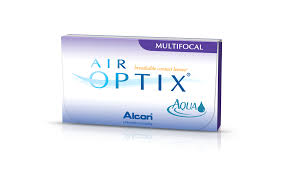
Air Optix Multifocal contact lenses are a monthly multifocal lens based on a high quality, highly breathable and comfortable material (same material as Air Optix, Air Optix for Astigmatism and Air Optix Colors).
Air Optix Multifocal contact lenses are popular because of their simplistic design. It has a center-near design in both eyes, which means you don’t have to worry about which eye is your dominant eye and which is your non-dominant eye.
It is also quite simple as far as ADD options. There are only 3 options to choose from: LO, MED, and HI. The ADD that will be selected for you will depend on the ADD on your glasses prescription according to this simple guide:
Proclear 1-day multifocal contact lenses
Proclear 1-day multifocal contact lenses are a daily disposable multifocal with a very unique design. It is part of the enormous family of Proclear contact lenses, which has been around for a very long time and is highly reputable.
Using Proclear 1-day multifocals does require your eye doctor to determine your dominant eye. To learn more about what eye dominance is, consult this article.
Proclear 1-day multifocal work on the principle of the near boost. Your eye doctor will determine the most appropriate near boost for you based on your glasses prescription and it will be given to your non-dominant eye.
These are just a couple of examples of multifocal contact lens brands and how they work. New brands are constantly being worked on and introduced into the market.
Should Multifocal Contact Lenses Be Ordered Online?
Multifocal contact lenses can be challenging to fit, as there are many considerations that your eye doctor must take into account. Your eye dominance needs to be properly assessed, your contact lens prescription needs to be accurately determined, the fit of the contact lenses needs to be ensured, and most of all, your vision needs to be optimized.
If you think you would benefit from trying multifocal contact lenses, discuss it with your optometrist at your next visit. Once you have undergone a complete fitting and received your contact lens prescription from your eye doctor, only then should you consider ordering multifocal contact lenses online.
Hopefully now you understand multifocal contact lenses and their complexities a little better. If you have any additional questions, please drop them in the comments section below and I’ll help clarify things for you.

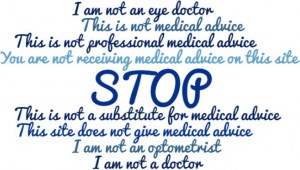

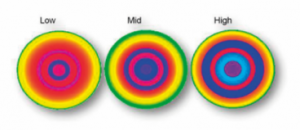





Leave a Reply